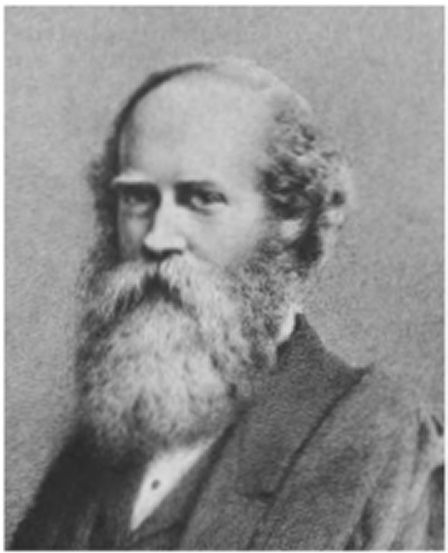- About MAA
- Membership
- MAA Publications
- Periodicals
- Blogs
- MAA Book Series
- MAA Press (an imprint of the AMS)
- MAA Notes
- MAA Reviews
- Mathematical Communication
- Information for Libraries
- Author Resources
- Advertise with MAA
- Meetings
- Competitions
- Programs
- Communities
- MAA Sections
- SIGMAA
- MAA Connect
- Students
- MAA Awards
- Awards Booklets
- Writing Awards
- Teaching Awards
- Service Awards
- Research Awards
- Lecture Awards
- Putnam Competition Individual and Team Winners
- D. E. Shaw Group AMC 8 Awards & Certificates
- Maryam Mirzakhani AMC 10 A Awards & Certificates
- Two Sigma AMC 10 B Awards & Certificates
- Jane Street AMC 12 A Awards & Certificates
- Akamai AMC 12 B Awards & Certificates
- High School Teachers
- News
You are here
The Cantor Set Before Cantor: A Mini-Primary Source Project for Analysis and Topology Students
Historians and others have long suspected that if a mathematical object or theorem is named after a person, then this is all but a guarantee that the object or theorem was not originally due to this person. The study of Pell’s equation goes back about a thousand years before Pell was born. L’Hôpital infamously bought the right to the discovery of the rule now bearing his name from Johann Bernoulli. Burnside’s Lemma is so notorious for having been known before Burnside that it has come to be called "The Lemma that is not Burnside's."
|
|
The Cantor set, named after Georg Cantor (1845–1918), is no exception to this rule. While Cantor defined the set now bearing his name in an 1883 paper, a version of it was defined several years earlier in 1874 by Henry John Stephen Smith in a paper that appeared in the Proceedings of the London Mathematical Society entitled “On the Integration of Discontinuous Functions” [Smith 1874/75]. Smith (1826–1883) was an Irish mathematician and a professor at Oxford. He made significant contributions to number theory as well as analysis, and is best known today for the Smith normal form of a matrix. In his 1875 paper, Smith took up the question of when a discontinuous function can be integrable. While it is easy to find examples of integrable functions which are discontinuous at finitely many points, it is more difficult to construct integrable functions which are discontinuous at infinitely many points. Smith developed a method of constructing such a function. He proved that any function which coincides with an integrable function everywhere other than a nowhere dense set is integrable. He then gave several examples, including a version of the Cantor set, of nowhere dense sets. Applying his theorem, these sets provide examples of integrable functions which are discontinuous on infinitely many points. |
The mini-Primary Source Project (mini-PSP) The Cantor Set Before Cantor begins with the question of how discontinuous a function can be while still being integrable, and ends with the construction of a version of the generalized Cantor set. In the middle of the project, students see Smith’s theorem concerning the construction of integrable functions with discontinuities at every point of a nowhere dense set. After working through some initial definitions and exercises, students are exposed to three of Smith’s examples of nowhere dense sets. The project has the students show that these sets are nowhere dense, and then use Smith’s theorem to construct a function which is discontinuous on that set yet still integrable. Smith’s third example is his version of the Cantor set, a set which illustrates that our initial intuition about how objects “ought” to behave is not always so close to the reality of things. While topologically interesting in its own right, the Cantor set also serves the special purpose of providing an example of an extremely “large” set on which a function can be discontinuous and integrable. In this sense, the project acts as a bridge between analysis and topology that can help students see the connections between the disciplines.

The Cantor set after seven iterations. Wikimedia Commons.
The complete project The Cantor Set Before Cantor (pdf) is ready for student use and the LaTeX source code is available from the author by request. Instructor notes are provided to explain the purpose of the project and guide the instructor through its implementation.
This project is the tenth in A Series of Mini-projects from TRIUMPHS: TRansforming Instruction in Undergraduate Mathematics via Primary Historical Sources appearing in Convergence, for use in courses ranging from first year calculus to analysis, number theory to topology, and more. Links to other mini-PSPs in the series appear below, including the topology mini-PSP Connecting Connectedness. The full TRIUMPHS collection also offers four other mini-PSPs and two more extensive “full-length” PSPs for use in teaching topology.
Acknowledgments
The development of the student projectThe Cantor Set Before Cantor has been partially supported by the TRansforming Instruction in Undergraduate Mathematics via Primary Historical Sources (TRIUMPHS) project with funding from the National Science Foundation’s Improving Undergraduate STEM Education Program under Grants No. 1523494, 1523561, 1523747, 1523753, 1523898, 1524065, and 1524098. Any opinions, findings, and conclusions or recommendations expressed in this project are those of the author and do not necessarily reflect the views of the National Science Foundation.
References
Smith, H. J. S. 1874/75. On the Integration of Discontinuous Functions. Proc. Lond. Math. Soc. 6:140–153.
Nicholas A. Scoville (Ursinus College), "The Cantor Set Before Cantor: A Mini-Primary Source Project for Analysis and Topology Students," Convergence (May 2019), DOI:10.4169/convergence20190501





